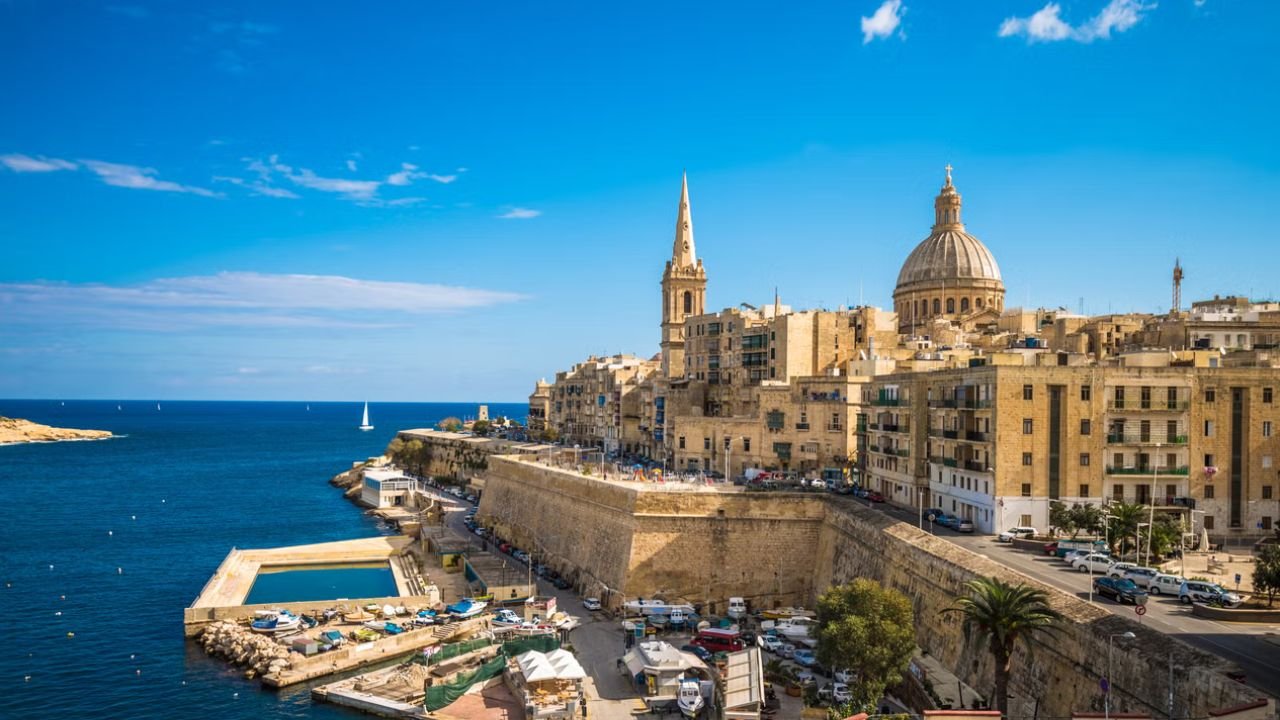Malta, a tiny archipelago in the central Mediterranean, is a destination rich in history, culture, scenic landscapes, and vibrant local life. Known for its ancient temples, stunning coastlines, warm climate, and welcoming people, Malta offers an unforgettable travel experience for history buffs, outdoor enthusiasts, food lovers, and cultural explorers alike.
This comprehensive Malta travel guide provides everything you need to know—from top attractions and outdoor activities to practical travel tips and local insights—so you can make the most of your visit.
1. Why Visit Malta?
- Historical Significance: Malta boasts a history spanning over 7,000 years, with megalithic temples, medieval fortifications, and WWII sites.
- Stunning Scenery: Pristine beaches, rugged cliffs, clear blue waters, and picturesque countryside.
- Vibrant Culture: Festivals, local crafts, traditional cuisine, and lively nightlife.
- Ideal Climate: Warm, sunny weather from spring through autumn.
- Accessible and Compact: Easy to explore with short distances between attractions.
2. Best Time to Visit
- Spring (April–June): Mild temperatures, blooming countryside, fewer crowds.
- Autumn (September–November): Warm weather, festivals, and less tourist traffic.
- Summer (July–August): Peak season, hot weather, lively atmosphere, crowded beaches.
- Winter (December–February): Cooler temperatures, festive events, fewer tourists.
Tip: For pleasant weather without the summer crowds, consider visiting in late spring or early autumn.
3. Getting to Malta
a. By Air
Malta International Airport (Luqa) is the main gateway, served by numerous airlines from Europe, North Africa, and the Middle East.
b. By Sea
Ferries connect Malta with Sicily and other Mediterranean ports, though most travelers arrive by air.
c. Entry Requirements
EU citizens can enter with a valid passport or ID card. Non-EU visitors should check visa requirements in advance.
4. Getting Around Malta
a. Public Transport
- Bus Network: Extensive, affordable, and reliable. Operated mainly by Malta Public Transport.
- Tickets: Valid for multiple trips; buy from kiosks or on board.
- Tips: Buses can be crowded during peak hours; plan accordingly.
b. Car Rental
- Recommended for exploring rural areas, beaches, and villages.
- Drive on the left side.
- Roads are generally good, but some rural roads may be narrow.
c. Taxis and Ridesharing
- Taxis are available; agree on fare or use metered taxis.
- Ridesharing apps like Bolt operate in Malta.
d. Biking and Walking
- Cycling is possible but may be challenging in hilly areas.
- Many towns are walkable and perfect for exploring on foot.
5. Accommodation Options
- Hotels: Ranging from luxury resorts to boutique hotels.
- Guesthouses and B&Bs: Budget-friendly options.
- Apartments and Villas: Ideal for longer stays or families.
- Location Tips: Stay in Valletta, Sliema, St. Julian’s, or Mdina for easy access to attractions and vibrant nightlife.
6. Top Things to See and Do
6.1. Discover Malta’s Ancient Past
a. Megalithic Temples
Malta is home to some of the oldest free-standing stone structures in the world.
- Ħaġar Qim & Mnajdra: Located on the southern coast, these UNESCO sites date back to around 3600–2500 BCE and are believed to have been used for religious rituals.
- Tarxien Temples: Near Valletta, featuring intricate carvings and altars.
- Ggantija Temples: On nearby Gozo, older than Stonehenge, showcasing impressive megalithic architecture.
b. The Hypogeum of Hal Saflieni
An underground prehistoric temple complex dating to around 4000 BCE. It’s a UNESCO World Heritage Site and must be booked well in advance due to visitor limits.
c. Medieval and Baroque Heritage
- Mdina: The silent, ancient city with winding alleys and medieval walls.
- Valletta: The fortified capital with historic citadels, churches, and palaces.
- Fort St. Angelo: Iconic fortress in the Three Cities.
6.2. Explore Malta’s Coastal Beauty
a. Blue Lagoon, Comino
A turquoise paradise perfect for swimming, snorkeling, and relaxing. Take boat trips from Malta or Gozo.
b. Dingli Cliffs
Spectacular cliffs on the western coast offering panoramic views and perfect sunset spots.
c. Beaches
- Golden Bay: Popular sandy beach with facilities.
- Mellieħa Bay: Large family-friendly beach.
- Ramla Bay: Known for its red sand on Gozo.
- Blue Hole, Gozo: Famous diving and snorkeling site with impressive rock formations.
d. Dwejra Bay
Famous for the Inland Sea, Azure Window (collapsed but scenic), and Dwejra Tower. Great for diving and photography.
6.3. Discover Gozo and Comino
- Gozo: Laid-back island with Ggantija Temples, Victoria Citadel, and scenic countryside.
- Comino: Small island with the Blue Lagoon and Crystal Lagoon.
6.4. Outdoor Activities and Adventures
- Diving and Snorkeling: Countless wrecks, caves, and reefs.
- Hiking: Coastal trails, countryside walks, and historic paths.
- Water Sports: Kayaking, paddleboarding, sailing.
- Cycling: Explore rural villages and scenic coastlines.
6.5. Cultural Festivals and Events
Participate in local festas, religious processions, and lively celebrations such as Carnival and Christmas festivals.
7. Local Cuisine and Dining
Malta’s cuisine is a flavorful blend of Mediterranean influences.
- Fenkata: Rabbit stew, a national dish.
- Pastizzi: Flaky pastry filled with ricotta or peas.
- Bigilla: Maltese bean dip.
- Ħobż biż-żejt: Traditional bread with olive oil, tomatoes, and tuna.
- Seafood: Fresh fish and shellfish, especially in fishing villages like Marsaxlokk.
- Kinnie: Popular Maltese soft drink with a bitter-orange flavor.
Dining Tips:
- Try local taverns (qagħaq) for authentic flavors.
- Visit food markets like Marsaxlokk Fish Market.
- Many restaurants offer outdoor seating with sea views.
8. Shopping and Souvenirs
- Lace and Embroidery: Traditional Maltese lace is renowned.
- Filigree Jewelry: Intricate gold and silver designs.
- Pottery and Ceramics: Brightly colored ceramic ware.
- Local Products: Olive oil, honey, and local wines.
9. Nightlife and Entertainment
- St. Julian’s & Paceville: Lively nightlife districts with bars, clubs, casinos.
- Valletta: Cultural events, live music, and theatre.
- Beach Bars and Lounges: Relaxed spots along the coast.
- Festivals: Fireworks, street parades, and concerts.
10. Practical Travel Tips
- Currency: Euro (€).
- Language: Maltese and English are official languages.
- Tipping: 5-10% in restaurants; small tips appreciated elsewhere.
- Safety: Malta is generally very safe.
- Health: No special vaccinations required; travel insurance recommended.
- Connectivity: Free Wi-Fi in many cafes; SIM cards available locally.
11. Sample Itineraries
3-Day Highlights Tour
Day 1: Valletta – St. John’s Co-Cathedral, Grandmaster’s Palace, Upper Barrakka Gardens, National War Museum. Evening in St. Julian’s.
Day 2: Mdina – Explore the Silent City, visit the Mdina Dungeons, panoramic views from the city walls. Afternoon at Golden Bay or nearby beaches.
Day 3: South coast – Visit Ħaġar Qim and Mnajdra temples, Dwejra Bay, Blue Lagoon in Comino. Sunset at Dingli Cliffs.
7-Day Extended Exploration
Combine city tours, historical sites, beaches, boat trips, and leisure days, including visits to Gozo and outdoor adventures.
12. Conclusion
Malta is a captivating destination that offers a perfect blend of history, natural beauty, and vibrant culture. Whether you’re wandering through ancient temples, lounging on beautiful beaches, exploring charming villages, or indulging in local cuisine, Malta promises an enriching experience.
Plan ahead, respect local customs, and be open to discovering the unexpected. With this guide, you’re well-equipped to explore Malta’s treasures and create unforgettable memories.

